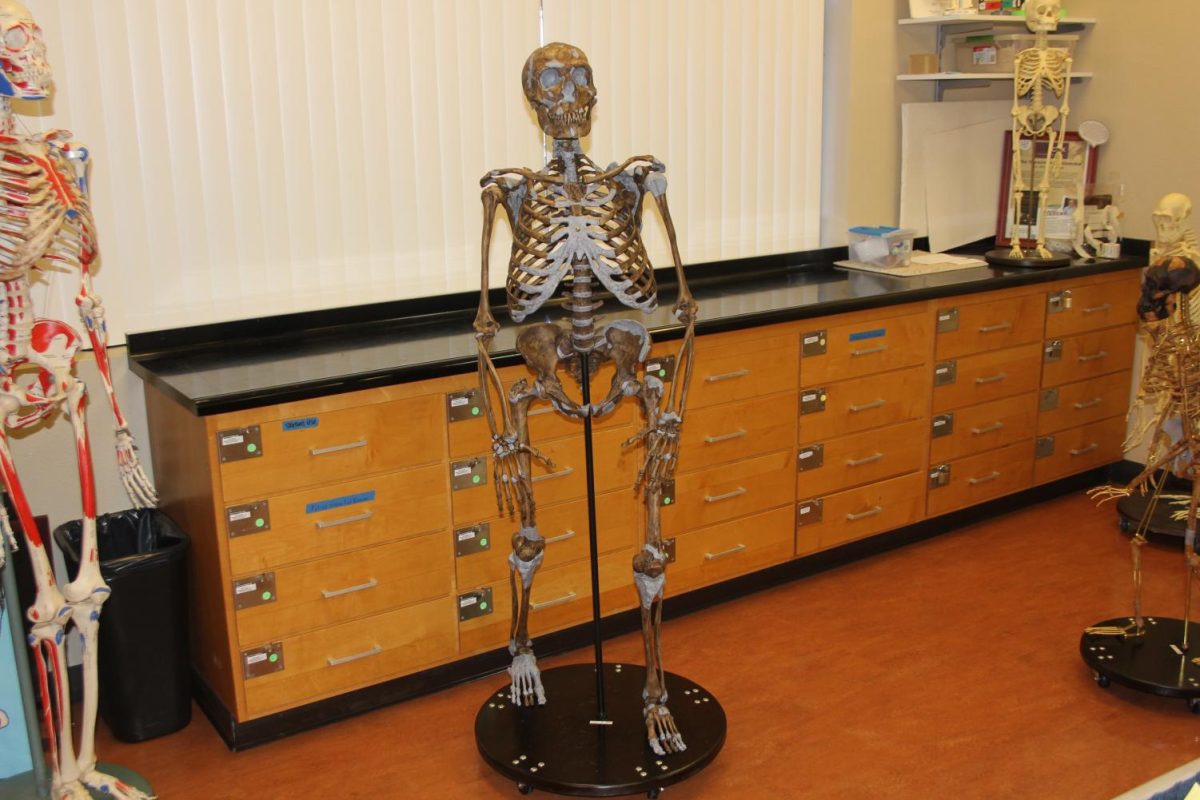‘Neander-Paul’ gives students a glimpse into history of humans
The 50,000-year-old Neanderthal stands in the Anthropology lab ready to be studied. Named “Neander-Paul,” the skeleton was modeled after La Ferrasie Neanderthals, an archaeological site with numerous of fossils.
The Anthropology Department acquired a full-size, nearly complete Neanderthal over the summer.
The department held a contest on Oct. 15, which was Anthropology Day, and voted on names to call the new skeleton, with the winner being “Neander-Paul.”
Anthropology Professor Amanda Paskey said Neander-Paul was acquired by the department through funds that were granted to Cosumnes River College by the lottery.
Isabel Araujo, the anthropology department instructional assistant, said Neander-Paul is approximately 50,000 years old and is modeled after La Ferrassie Neanderthals, an archaeological site in France famous for multiple fossils. These Neanderthals lived between 130,000 years ago to 30,000 years ago.
Neander-Paul was discovered in 1909, and stands 5 feet 2 inches tall, which is about three inches shorter than the average male Neanderthal at that time, Araujo said.
“I think the new Neanderthal is really neat because it’ll be a crucial resource when studying our human relatives,” said Anjelica Valencia, a 33-year-old Spanish major. “I am excited to have this Neanderthal be provided as a visual aid at CRC and look forward to learning more about Neanderthals in lab with Dr. Goldfield.”
Araujo said Neander-Paul is stockier, sometimes referred to as barrel-chested, likely due to cold climate adaptation. He also has a broader nose and an elongated cranium.
“Their cranial capacity was actually around 1,500 cubic centimeters which is actually sometimes bigger than ours,” Araujo said.
The new skeleton is an important tool for giving students a good idea of what Neanderthals might have looked like, Araujo said.
“This is really cool that we actually have an articulated one, I think it just gives you a better idea of what they were like,” Araujo said. “It’s hard to get a really good impression of what they might have actually looked like and stood like.”
The fully articulated skeleton does more than just show the height and bone structure.
“Because he is complete you can also look at other parts of his morphology like his pelvis, his femur, you have all that,” Araujo said. “You can do other comparisons, not just with his skull.”
Neander-Paul and his fellow Neanderthals practiced Mousterian culture, which involves making and using stone tools by chipping away at rocks until sharp.
Neanderthals at this time also had shelters, used fire, wore clothing and even jewelry, making necklaces out of animal fangs and talons.

